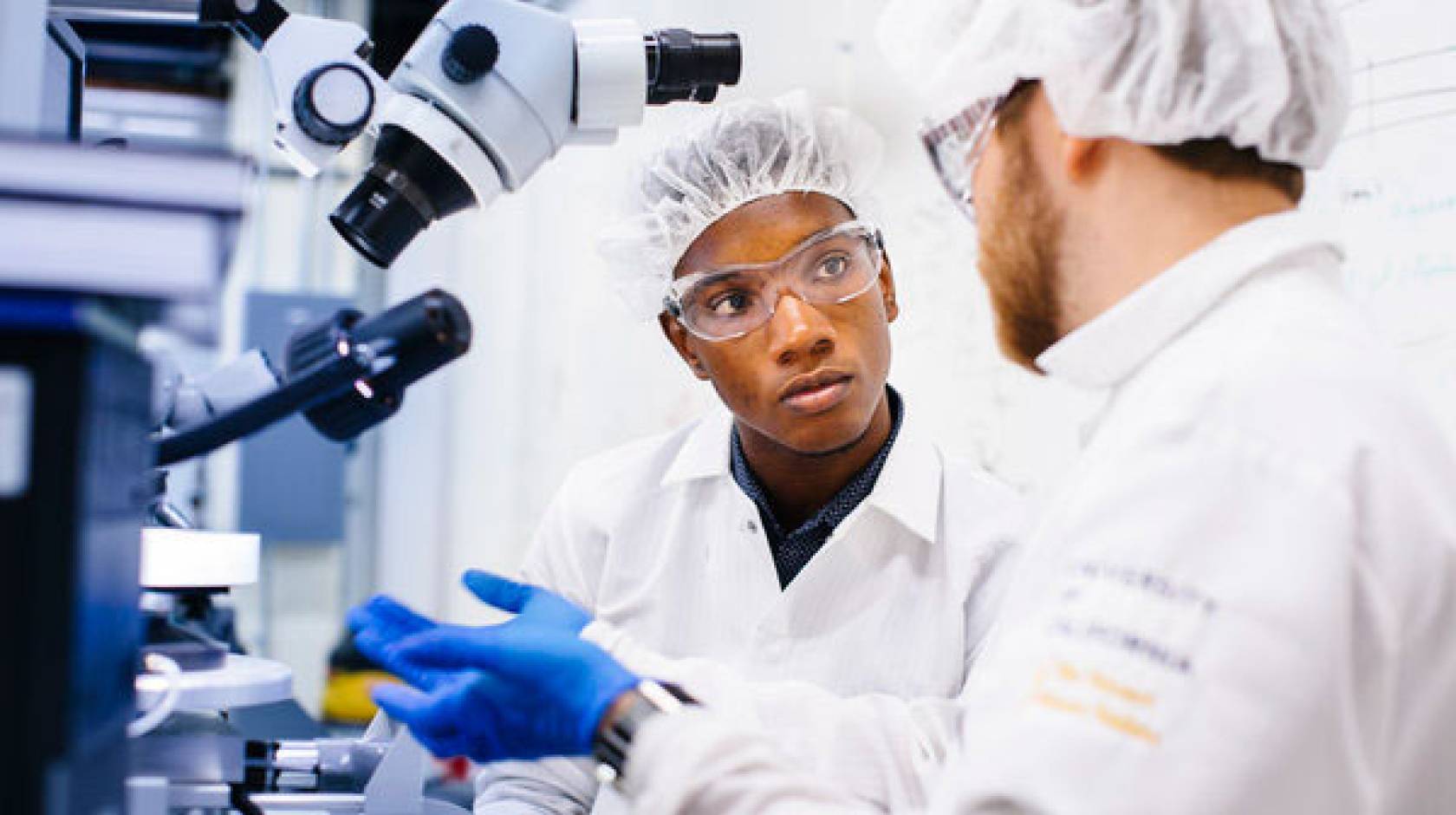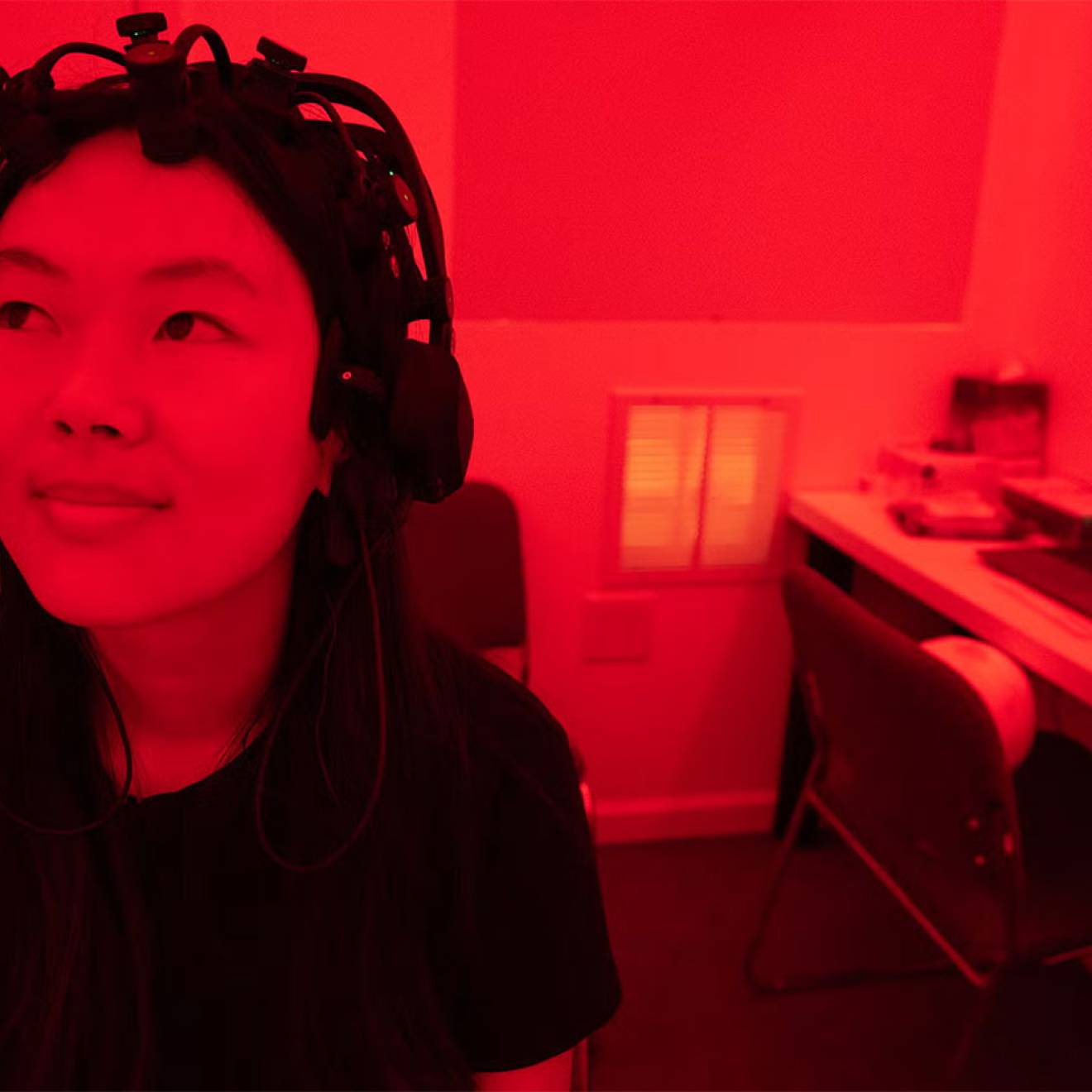Nicole Freeling, UC Newsroom

Like many of his classmates in Howard University’s biology program, Frederick Nelson always assumed he’d go on to med school. Now, after spending two months in an internship at UC Davis doing research on the impacts of climate change on fish, his mind is set on a different path: Pursue a Ph.D., preferably at a UC campus, with the hope of becoming an ecological scientist.
“I loved watching Animal Planet as a kid, but I didn’t realize you can actually go to school and become a professional doing those kinds of things,” said Nelson, a rising senior. “After getting a chance to experience what it’s like to work in this environment and do this kind of research, I’ve realized this is what I want to be doing.”
It isn’t just a career in research that had never occurred to Nelson. Before arriving at Davis a few weeks ago, he had never been farther west than his home state of Texas. “Bike culture. Organic food. It’s like a different country out here.”
Nelson is part of a program that aims to attract students from a broader diversity of backgrounds to UC campuses by establishing connections with historically black colleges and universities (HBCUs), and funding internships that bring talented students to UC for research, mentoring and skill-building opportunities.
Eighty-five HBCU undergraduates are doing research on eight UC campuses this summer, in fields ranging from poverty and English lit to neuroscience and engineering. Students come from well-known schools like Howard and Morehouse, but also from lesser-known institutions such as Claflin University and Tougaloo College.
Students work alongside faculty who are leaders in their field, doing research in cutting-edge facilities and labs. They also participate in workshops on taking the GRE, writing a personal statement and preparing for graduate school.
The students make connections valuable to gaining admission to graduate school, and get the inside scoop from current Ph.D. students about the stuff books can’t tell you — how to tell if a particular adviser is a good fit, for example, and what grad students do to blow off steam.
After just three full summers, 24 students who participated in the program have enrolled in UC Ph.D. and master’s programs.
That is an especially encouraging result, UC officials say, given the time it can take for such programs to bear fruit. Most participants are starting their junior or senior year as undergraduates. They have to complete their undergraduate degrees, and many may take time off for work or soul-searching before embarking on the next phase of their education.
“As time goes on, we expect to see even more of our HBCU interns coming back to our campuses,” said Pamela Jennings, director of graduate studies at UC Office of the President, which developed the program.
Officials also believe there could be a strong multiplier effect: As participants go back to their home campuses and share their experiences with their classmates, it is putting the University of California on the map for more students at HBCUs.
An avenue to greater diversity
Attracting a broad array of candidates to graduate programs is critical to cultivating the pool of talent necessary to attain a diverse faculty — something UC has made a priority.
It also fosters a more inclusive environment for undergraduates: Research has shown that students are more likely to pursue and succeed in higher education when there are faculty and mentors who look like them.
Yet UC, like universities nationally, has faced a challenge in attracting large numbers of minority students to pursue doctoral degrees. Black students are particularly under-represented; they comprise just under 3 percent of UC doctoral students.
The UC-HBCU initiative aims to change the statistics. Its approach goes beyond traditional recruiting efforts to reach those who otherwise might not have even considered graduate school.
“For two months, you live the life of a graduate student,” said Howard University alumna Mayowa Adegboyega. “You go into the lab and do research every day. You work with faculty and graduate mentors. You live in campus housing,” she said. “They even give you a bike.”
The experience convinced Adegboyega to pursue a career in academia. She is starting her second year of graduate school in anthropology at UC Davis. Adegboyega currently is working to reconstruct a 60,000-year-old Neanderthal pelvis using CT scans and 3-D imaging software.
She has benefited from a fellowship, initiated by UC President Janet Napolitano, that enables participants in the UC-HBCU program who enroll in UC Ph.D. programs to receive competitive multi-year funding packages. The funding, critical to recruiting top graduate students, is shared between UC Office of the President and individual campuses.
“In my department, there is probably only ever going to be one of me,” said Adegboyega, who is among few women of color in her lab. “Part of my motivation in going into this field was to increase my exposure, as well as that of my colleagues, to different kinds of people.”
Opening the door to new possibilities
The UC-HBCU initiative gives faculty broad latitude to develop unique programs.
UCLA marine scientist Paul Barber, for example, brought six HBCU students to the campus for two weeks of research mentoring and scientific dive training, followed by a five-week stint in French Polynesia to do underwater research on coral reefs. Interns spent five weeks at a research station on the island of Moorea. They designed their own research projects, jury-rigged the equipment they needed to make the experiment go, and produced results that they can publish and present at conferences.
“We do a lot to make students believe this is possible for them,” Barber said. “I didn’t grow up near the ocean and I didn’t know anything about graduate school. They’re not any different than I was at their age.”
At UC Berkeley, fellows in a science and engineering summer fellowship work in a state-of-the-art NSF-funded engineering lab focused on energy efficient electronics science. They undertake hands-on projects in areas such as microelectronics, nanoengineering, 3-D printing and laser optic technology.
Imani-Kai Horton, a rising junior at Hampton University in Virginia, was among those who participated in the internship and has now set her eyes set on graduate school.
“It’s amazing to me that this is stuff I could actually do,” said Horton. The engineering major has been working on designing wearable technology for medical applications, using a small flexible lithium-ion battery that can be worn on jewelry and clothing, and recharged simply by being tossed onto a specially treated bowl or pad.
“I’ve had to learn new software, new equipment. I’ve been working on devices I’ve never even seen before, doing things I couldn’t imagine.”
Now, she said, “I definitely want to go to graduate school. I know how to get there, and what I need to do to prepare.”

